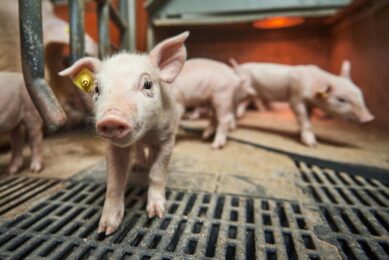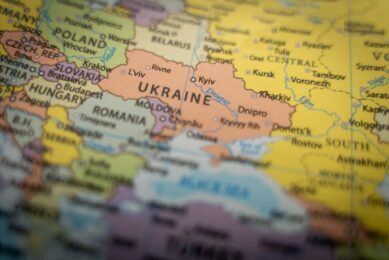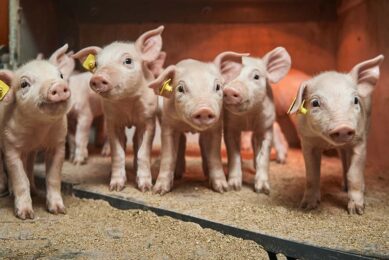Autumn infertility
Outdoor sows are very much at the mercy of increasing and decreasing seasonal light patterns. Their hormone system cannot be fooled by controlled indoor lighting to get breeding 24/7. Still, autumn fertility can be resolved.
Breeders who have their sows outdoors are in the minority – even so, these notes are for them. Outdoor breeders have to have plenty of land with the right well-drained soil, the right mild climate, dedicated ‘all-weather’ stockpeople and I believe the right breed of tough, hardy well-milking mothers with strong legs.
Such breeders benefit from far lower housing costs, and usually have their own supply of grain which has enabled them to survive – so far – the present severe feed price crisis.
Disadvantage
What is a disadvantage, however, is that their sows are very much at the mercy of increasing and decreasing seasonal light patterns. Not for them are the benefits of controlled indoor lighting to ‘fool’ the sow’s age-old hormone system into thinking it is eternal springtime and thus time to get breeding 24/7.
(I did hear that floodlighting outdoor rebreeding paddocks might be helpful, but that came to nothing, even ignoring the high power costs).
Living as I do in the middle of a primary outdoor sow breeding area, over the years I’ve suspected that we ‘outdoorers’ get more late summer/ early autumn infertility (as distinct from the more common early winter performance dropaway) than the majority who keep their sows indoors. Why might this be?
Too much light in spring?
In a northern hemisphere spring, as the romantic poets from Bunyan and Shakespeare onwards remind us, we get ‘April showers’. Periods of intermittent, short showers followed by the brightest of blue skies. The half-hourly bouts of rain wash the atmosphere as clear as crystal and the ultra-violet from the intense periods of very bright sunshine is obvious – I burn very quickly during a day spent on the downs inspecting paddocks. So do the sows!
Very few outdoor breeders put up temporary sunshades as early as April.
“For the hot months of June to August maybe – but April? It’s not hot then,” they say.
Light intensity
Correct – but the light intensity is high. I’m pretty sure it is a contributory factor. But seasonal infertility is a very complicated, interrelated subject and there is a lot we don’t know, even now. Any suggestions?
For the past three years I have been measuring light levels inside breeding barns with a redundant photographer’s light meter (I will describe what to buy and how to calibrate it next time). While I get a reading of around 350 lux (lumens) in a really well-lit indoor breeding unit, I’m getting 600 lux outside on those April days I’ve described.
Sunshade area
A sunshade area can be four strong 4 m high poles (old redundant telephone poles are often free for the asking) joined by 100 x 100 mm battens. These are covered by a ‘roof’ of double ‘Galebreaker’ netting – double for wind resistance, not so much shade.
Not expensive, and sows can be encouraged to use it by providing a modicum of straw into which a few feed nuts are scattered. Sows get tired walking about ‘fossicking’ – one authority suggests as much as 6 km in a day – and can prefer the shaded area to rest up rather than a sunbaked, overhot and airless outside ark, which is a shelter from bad weather and for cosy sleepy-byes at night-time.
So get those sunshades up for our increasingly hot summers, sure, but get them up far earlier.
Join 18,000+ subscribers
Subscribe to our newsletter to stay updated about all the need-to-know content in the pigsector, three times a week. Beheer
Beheer










 WP Admin
WP Admin  Bewerk bericht
Bewerk bericht